Description
Ceftriaxone treats bacterial infections of the brain, respiratory tract, ear, abdomen, abdominal wall, urinary tract and kidney, bones, joints, and skin or soft tissues. It is as well used in the management of fever with low WBC white blood cells (neutropenia), surgical site infections, joint pain caused by parasite ticks (Lyme disease), typhoid, paratyphoid, and sexually transmitted infections (syphilis, gonorrhoea).
Ceftriaxone is an antibiotic injection. It works by fighting against bacteria present in your body. It is used to treat many kinds of bacterial infections, including severe or life-threatening forms such as meningitis.
The injection may also be used for purposes not listed in this medication guide.
Product Description
Sometimes drugs aren’t safe when you take them with certain other drugs and food. Be sure to talk to your prescriber about all your drugs. Some drugs that interact with Monocef are cefazolin, cephalexin, cephradine, cefdinir, cefditoren, cefaclor, cefadroxil, cefprozil, ceftibuten, cefuroxime.
Things to remember:
— Always take medicine as per the prescription
— Don’t use this drug if you are pregnant or breastfeeding.
— This injection should not be given to children without a doctor’s consent.
Side Effects
Common side effects may include:
— mild diarrhea
— warmth, tight feeling, or a hard lump where the injection was administered.
— vaginal itching or discharge
— rashes on the whole body
— abnormal liver function
This is not a complete list of side effects, and others may occur. Talk to your healthcare specialist for medical advice about side effects.
How to Use
Ceftriaxone belongs to a group of medicines called cephalosporin antibiotics. It kills the bacteria or inhibits their growth by interrupting the bacterial cell wall (outer coating of bacteria) formation. As a result, the bacterial cell wall is damaged and ruptured, thereby killing the bacteria.
Ceftriaxone:
Ceftriaxone is an antibiotic useful for the treatment of several bacterial infections. This includes ear infections, skin infections, urinary tract infections, gonorrhoea, pneumonia, pelvic inflammatory disease, sepsis, bone and joint infections, intra-abdominal infections, and meningitis. It is also used preoperatively to reduce the risk of postoperative infections. It is administered by (IV) intravenous or intramuscular injection (IM).
How to use it?
- 250 mg IM as a single dose
- Duration of therapy: 4 to 14 days
- Complicated infections: longer therapy may be required.
- Infections due to Streptococcus pyogenes: At least 11 days
Take it exactly as prescribed by your doctor.
You should take medicine for as long as your doctor recommends you.


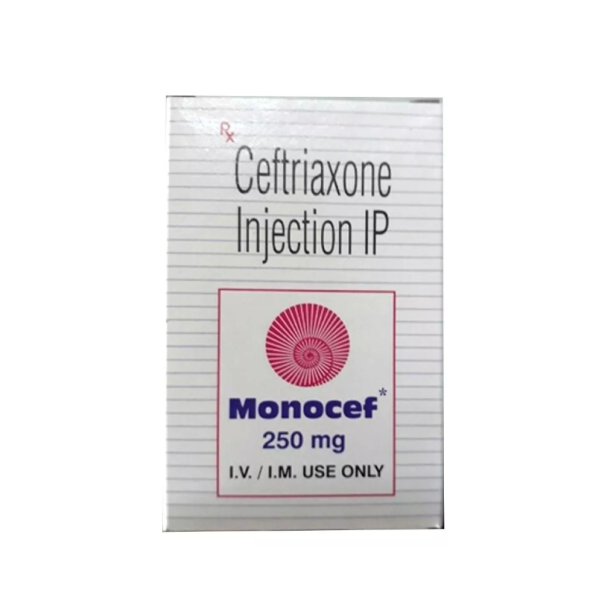
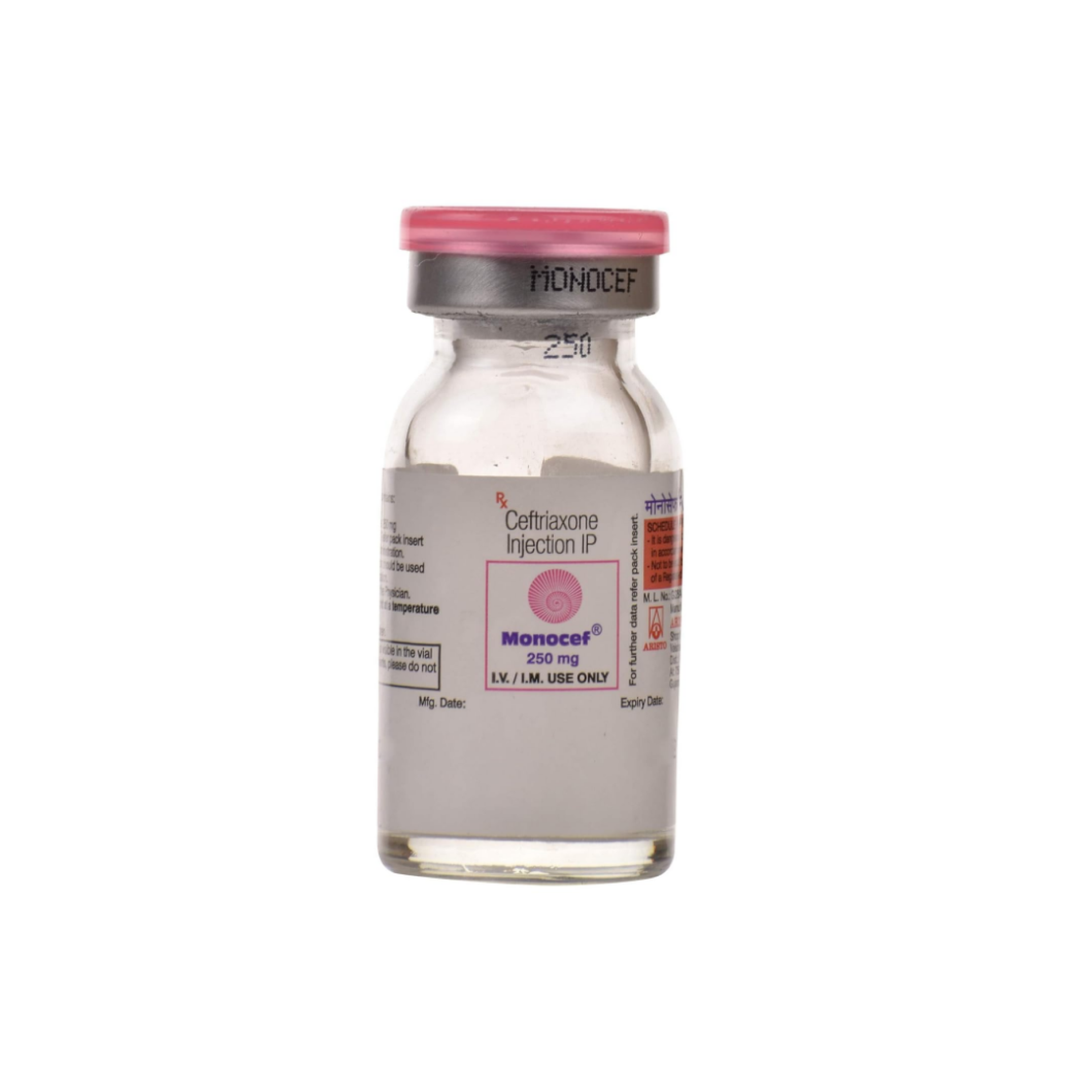
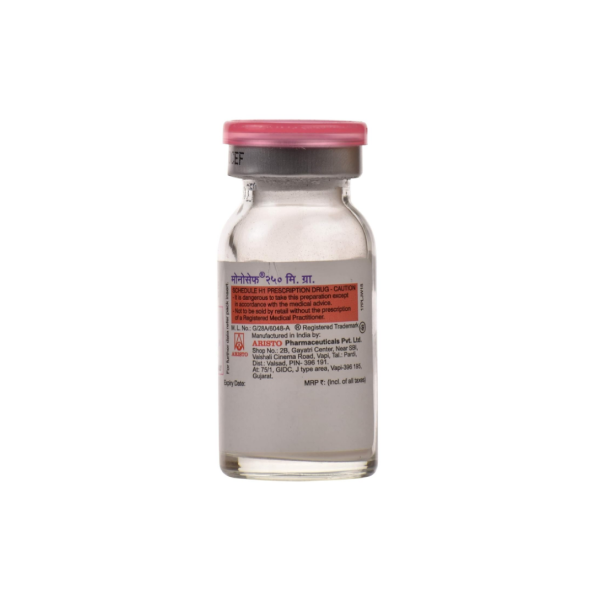
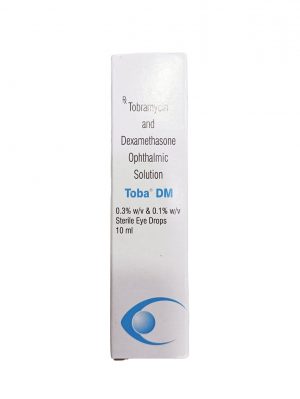
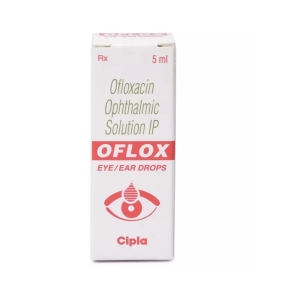
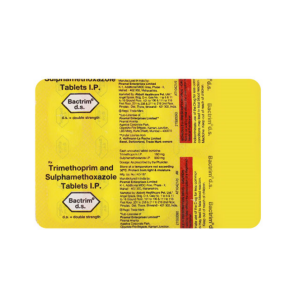
2 reviews for Monocef 250 mg Injection
There are no reviews yet.